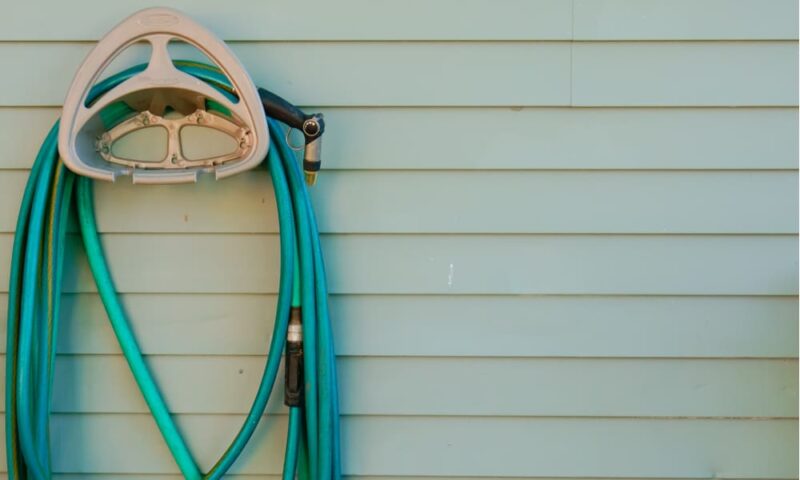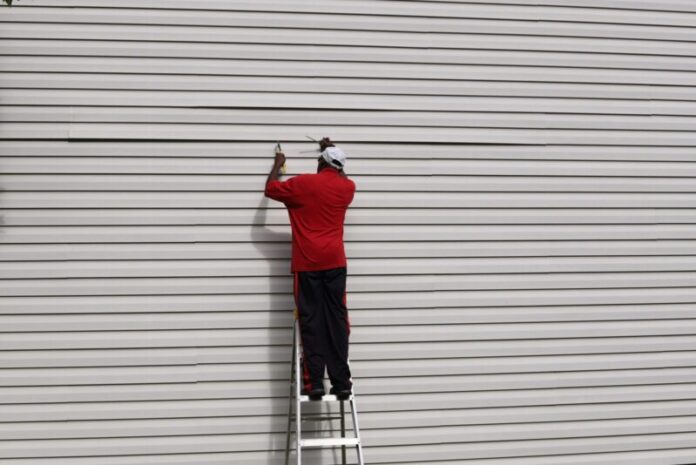Vinyl siding is a popular material for home construction because it is easy to install and maintain. However, vinyl siding is not as strong as wood and can be damaged by heavy objects such as furniture or appliances. Hanging heavy things on vinyl siding can cause damage that may require repair work or replacement of the entire siding.
Vinyl siding is a great material to use for your home. It is durable, easy to maintain and can be hung with vinyl hooks.
Vinyl siding is a popular option for improving and protecting a home’s or other building’s exterior. Although most siding brands are robust and long-lasting, they do have limits. There is a risk of damaging the siding if you intend to hang large things from it. It may be done correctly or incorrectly. If you own or rent a building with vinyl siding and need to hang or suspend large items from it, this guide will teach you how to do so securely.
How to use vinyl siding to hang heavy items
The ideal method for suspending anything heavy from your vinyl siding is determined on what you’re suspending and how heavy it is. You’ll need to make sure you have enough support to hold the item in place and prevent putting too much stress on the siding, which may cause it to crack or rip. Replacing vinyl siding may be costly, and matching the design and color if it’s been up for a time might be difficult. There are a few approaches to the task that will provide the greatest long-term outcomes.
Siding Hooks for Children Under 12 Pounds
Siding hooks are a simple way to securely hang heavy objects on vinyl siding, according to Hunker. Siding hooks are inserted into the grooves between adjacent siding slats. They snap into place and can support up to 12 pounds of weight. Because stainless steel is resistant to rust and corrosion, it is the ideal material to use for hooks. If you wish to remove the item, the hooks are equally simple to remove without harming the siding. While this technique works for certain items, those weighing more than 12 pounds need a different approach.
Items that are often hung from vinyl siding
Holiday decorations, seasonal wreaths, light strings, wind chimes, and other ornamental objects are often hung on vinyl siding. Security and surveillance systems, such as cameras, lighting systems, and other electronic equipment, are very prevalent. These objects usually weigh less than twelve pounds and may be securely hung with siding hooks.
Objects weighing more than 12 pounds should be hung.
More support is required for heavier items than a siding hook can provide. Air conditioning units are an excellent example, and depending on the size and type, they may weigh up to 60 pounds or more. To preserve the siding’s integrity and hold the item securely in place, you may need to switch to a different approach. Drilling into the siding to add bracing that can withstand the weight of the item while anchoring to the buildings behind the siding is an option provided by Survival Freedom.
How to drill into vinyl siding safely
Drilling vinyl siding incorrectly has the potential to inflict irreversible harm. The following are the stages that must be performed in order to complete the task properly.
1. Find the studs hidden beneath the siding.
The framework beneath vinyl siding is made out of studs that are spaced evenly. Because you can’t see what’s beneath the siding, an electronic stud-finder may help you locate the studs. Once you’ve located them, mark their position with a marker. These are the areas where you’ll drill. Make sure you get all of the dimensions correct and that your markings are placed correctly. It’s a good idea to double-check, if not triple-check, that each hole is precisely aligned.
2. Practice in the summer.
Vinyl siding is more prone to break or fracture when it is chilly. To reduce the risk of damage, any required drilling should be done while the weather is warm. If you have to drill in cold weather, first warm up the area with a hair drier or a portable heater. Simply preheat the surface to make drilling more secure. You’ll be ready if the temperature is at least 60 degrees Fahrenheit.
3. Select a bit type that is suitable.
It’s important to know what type of material the vinyl siding is made of. If the structure is constructed of wood, a wood bit may be used. To prevent damaging the building behind the siding, use a masonry bit if it’s constructed of brick or comparable material.
4. During the drilling operation, press down hard.
Drill just enough to pierce the material, but not all the way through. Drill all of the holes at the same time.
5. Place the item on the hook.
Fit the hardware you intend to use for bracing or holding the object once you’ve finished drilling. To ensure that all of the fittings are securely fastened, use a drill or an electric screwdriver. Assemble the product and secure it to the siding. For each hole you drilled, it’s preferable to use screws with washers. Choose braces or hangers made of long-lasting materials that resist rust and corrosion.
Finally, some ideas

There are a couple different methods to securely hang a large item from your vinyl siding. Siding hooks make it simpler to attach items weighing less than 12 pounds. The hooks are simple to set up. They’ll keep the item in place safely and securely without harming the siding. It’s preferable to choose a technique that offers greater stability and support if you need to hang heavy items like an air conditioner, a water hose rack, or another item. Drilling into the side to locate studs for the support needed to carry larger items is simple. To prevent harming the siding or having an unsafe item hanging from your walls, use caution. You may securely suspend large objects from vinyl siding by following a few simple procedures that will ensure excellent results. For effective mounting of heavy items on vinyl siding, use the guidelines and techniques outlined above.
Vinyl siding is a great option for homeowners. It looks good, it’s easy to maintain, and it won’t rot or warp like wood can. However, you need to be careful when hanging heavy things on vinyl siding. Reference: heavy duty vinyl siding hooks.





